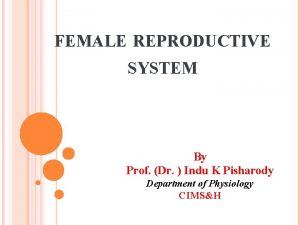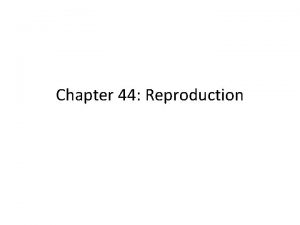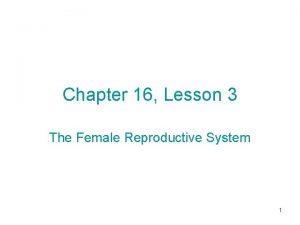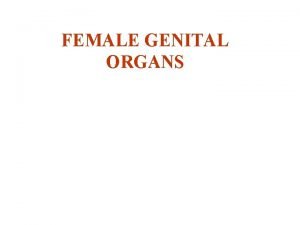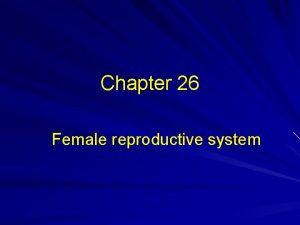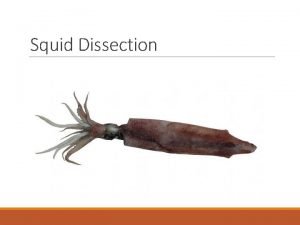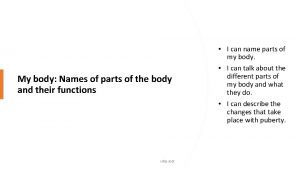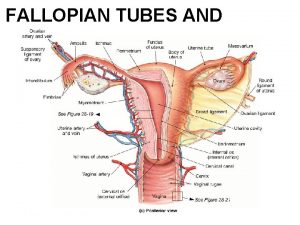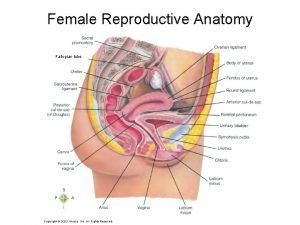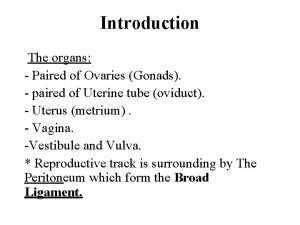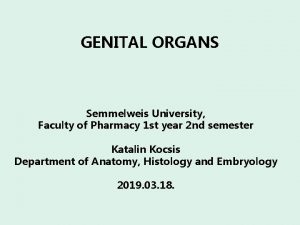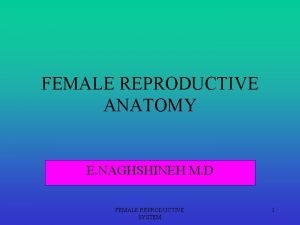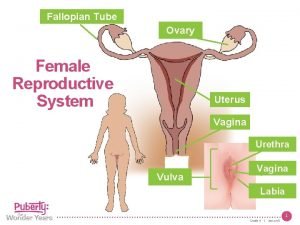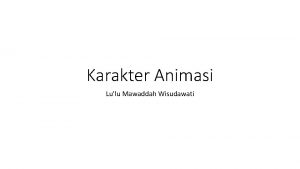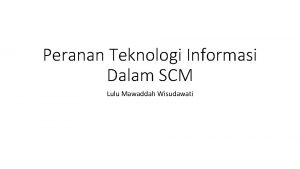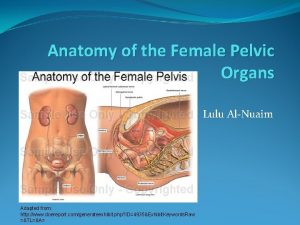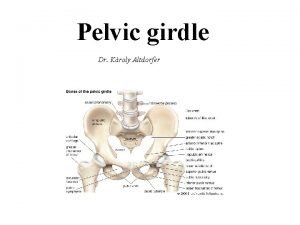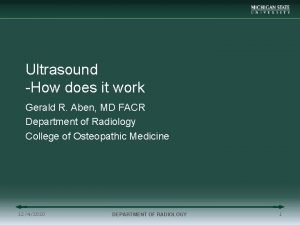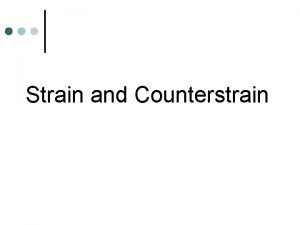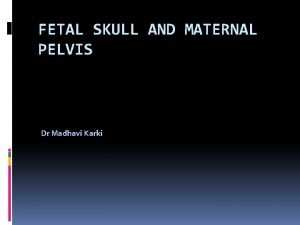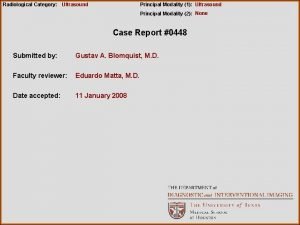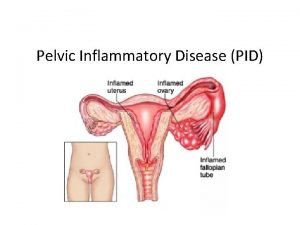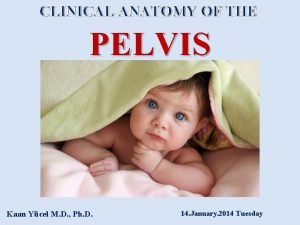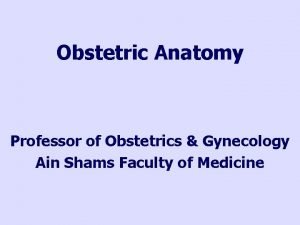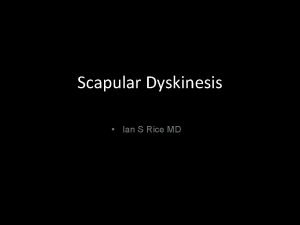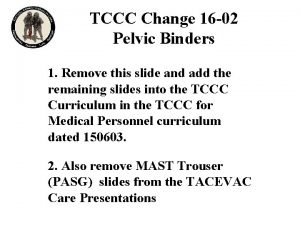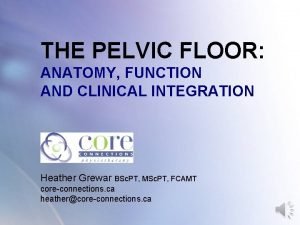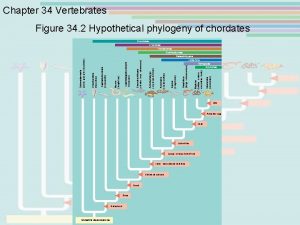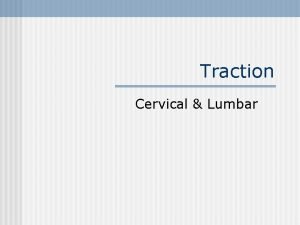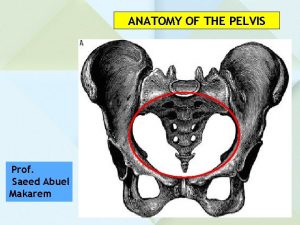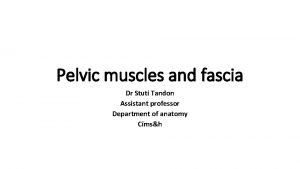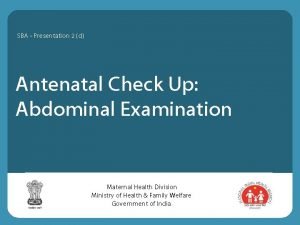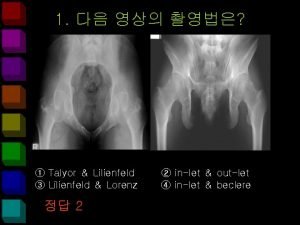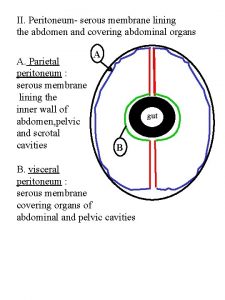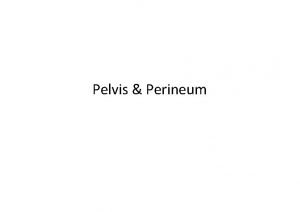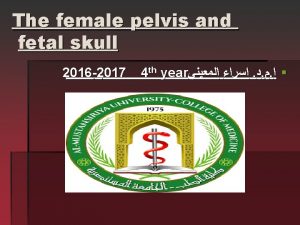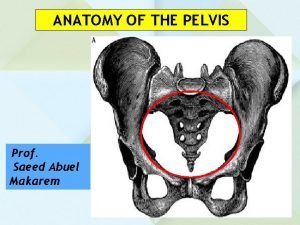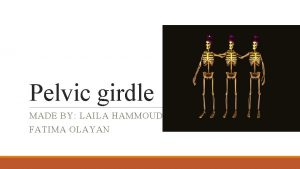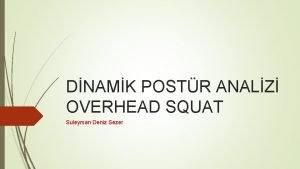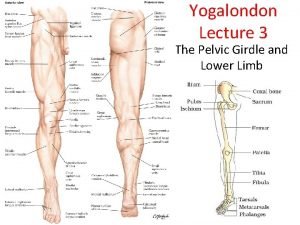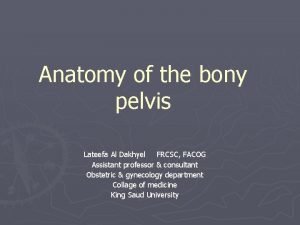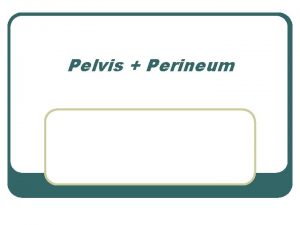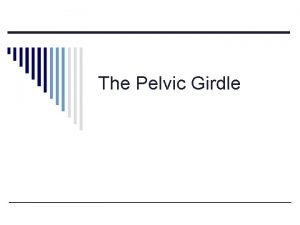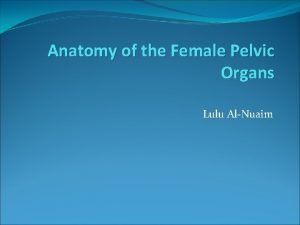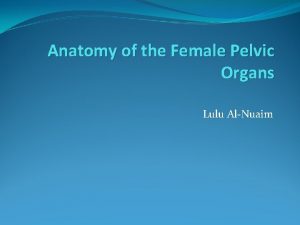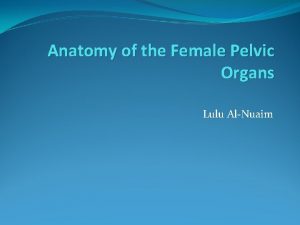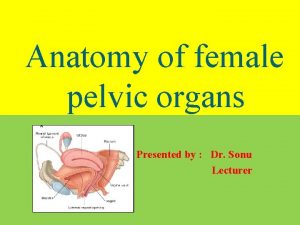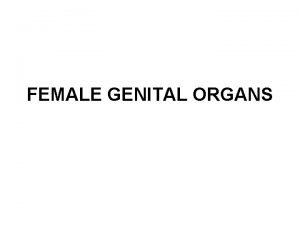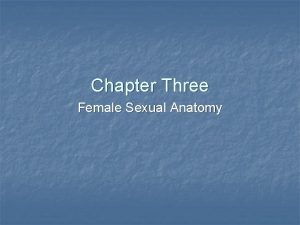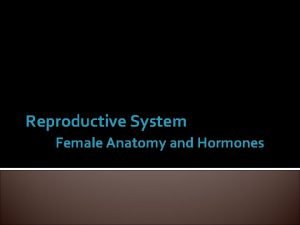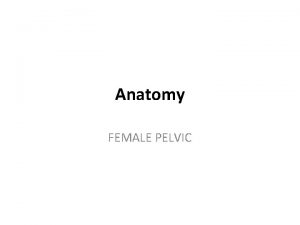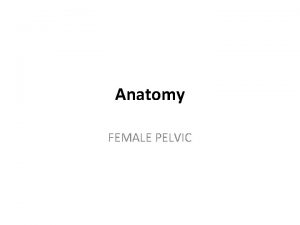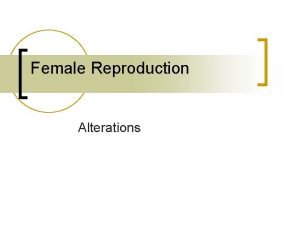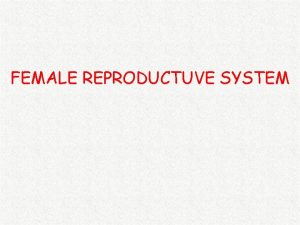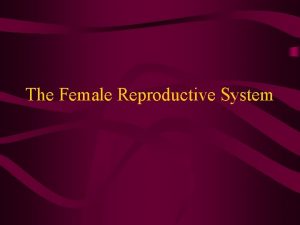Anatomy of the Female Pelvic Organs Lulu AlNuaim



















































































- Slides: 83

Anatomy of the Female Pelvic Organs Lulu Al-Nuaim Adapted from: http: //www. doereport. com/generateexhibit. php? ID=4935&Exhibit. Keywords. Raw =&TL=&A=

Aims To fully understand the anatomy of the female pelvis in terms of bones and tissues, and fetal skull, this would help in explaining the mechanism of Labour & Delivery. AL Nuaim 11/26/2020

Objectives v. Student at the end of session should be able to: Ø Describe anatomy of female bonny pelvis&Diameters. Ø Discuss the important landmarks in the female pelvis. Ø To know the types of pelvis. Ø Comprehend the normal organs with their blood, venous, lymphatic drainage and innervation. Ø Explain the relationship between pelvic organs. Ø Understand the relationship between the female pelvis (Bones& Soft Tissue) and fetal skull, in order to understand the mechanism of labour AL Nuaim 11/26/2020

The Vulva external organs of the female Include: - ü Mons veneris ü Labia majora ü Labia minora ü The clitoris ü The vestibule The intriotus has six openings: • Urethral meatus • Two skene’s ducts • Vaginal orifice • Two Bartholin ducts. Adapted from: 11/26/2020 https: //www. cancer. org/cancer/vulvarcancer/about/what-is-vulvar-cancer. html AL Nuaim

The Vulva Bartholin glands - lies on each side of the vagina, in the posterior lower third 1/3 of the interiotus. • Secrete mucus – alkaline • Blood supply: Pudendal artery from the femoral aa Venous drainage in the corresponding vein. • Lymphytic inguinal glands External iliac glands • Nerves: Branches of the pudendal nerve, perineal nerve (T 12 L 1 -2, S 2 -4) • In labour: Catheterization, Episiotomy, Anaesthetic infiltration AL Nuaim 11/26/2020

The vagina A Canal/tube extend from the vulva to the uterus • Runs upwards and backwards • Walls lie in close contact, easily separated. Speculum examination • The posterior vaginal wall is longer than the anterior 11. 5 cm (4. 5 in) vs 7. 5 cm • Cervix enters the vagina at a right angle. • Tornices = four Anterior, posterior and Two laterals AL Nuaim 11/26/2020

11/26/2020 Adapted: https: //img. webmd. com/dtmcms/live/webmd/consumer_assets/site_i mages/articles/image_article_collections/anatomy_pages/vagina. jpg? resize=646 px: *&output-quality=100 AL Nuaim

The Vagina Blood supply • Vaginal aa, uterine aa, middle haemorridal, inferior vesical, pudendal branches of the internal iliac aa. • Venous drainage to corresponding veins. • Lymph: inguinal, internal iliac, sacral glands • Nerves: symphatetic and parasymphatetic • Relations: Anterior : base of the bladder on upper ½ of vagina. cystocele Posterior: upper ½ ? ? ? Pouch of Douglas in the lower ½ Rectocele Rectum centrally Perineal body inferiorly Laterally: AL Nuaim 11/26/2020

The Cervix Forms the lower 1/3 of the uterus • Enter the vagina at a right angle • Barrel shape • 2. 5 cm (1 in) long • Two parts: – Supr avaginal – Intra vaginal • Cervical os – Internal os – External os; shape differ in nulliparous and multiparous • • Cervical canal between the internal os and the external os Cervical canal is covered by columnar epithelium Transformation zone; squamous-columnar junction. Cervical Ectropion 11/26/2020 AL Nuaim

Adapted from: http: //www. medindia. net/images/common/patientinfo/950_400/anatomy-ofthe-cervix. jpg 11/26/2020 AL Nuaim

Blood supply Uterine aa Lymphatic drainage Internal iliac, sacral glands Adapted from: https: //www. earthslab. com/wpcontent/uploads/2017/03/031717_1945_Uterus 8. png 11/26/2020 AL Nuaim

The Cervix Supports: Cardinal ligaments/Transverse Cervical Pubocervical ligaments Uterosacral ligaments All 3 ligaments insert into supra-vaginal cervix &upper vagina In pregnancy: Rich blood supply – bluish coloration Soft Cervical glands – mucus plug “operculum” Late in pregnancy – softer and starts to dilate. In labor: The longitudinal smooth muscle fibres of the uterus contract and retract pulling upward thus reducing the length of the cervix. Cervical Bishop Score The cervix is made up of fibrous and elastic tissue Full dilatation marks the end of the first stage of labour. AL Nuaim 11/26/2020

The Uterus The uterus lies in the true pelvis. Anteverted (A/V)and anteflexed (A/F)in position. The body of the uterus lies above the bladder. • Size: 7. 5 cm length • 5 cm wide • 2. 5 cm thick • 50 -75 gm weight, in pregnancy 1 Kg ? ? • Position/site: Gross structure: • The cervix lower 1/3 • The isthmus • The cavity • The corpus • The cornua. • The fundus AL Nuaim 11/26/2020

Adapted from: http: //aibolita. com/uploads/posts/201503/44 qv-132. jpg 11/26/2020 AL Nuaim

Layers: Endometrium Myometrium Perimetrium - peritoneum Adherent, where? ? ? Loose, ? ? ? Blood supply: Arteries: fundus – ovarian artery (aa) Body-uterine aa , directly from internal iliac aa Venous: Rt Ovarian? ? Left Ovarian? ? ? The relationship between the ureter and uterine aa v Uterine aa runs behind the peritonieum, cross transeverse cervical ligament (Cardinal ligament) then the aa passes anterior to and above the Ureter 1. 5 cm from lateral vaginal wall fornix. Water under the bridge, Important landmark AL Nuaim 11/26/2020

Venous: Right ovarian vein - inferior vena cava Left ovarian vein – renal vein Lymph Internal and external iliac glands Inguinal /Sacral glands Nerves: Sympathatic and Parasympathetic AL Nuaim 11/26/2020

THE FALLOPIAN TUBEs • Extend from the cornua of the uterus, travels towards the sidewalls of the pelvis. Then turns downwards and backwards. The tube lies in the upper margin of the broad ligaments • Communicate; superiorly with the uterine cavity, Inferiorly with the perineal cavity. Tubal patency checked by different means Length 10 cm : 3 mm thick • 4 PARTS ü Interstitial ü Ampula ü Infundebulum ü Fimbrial BLOOD SUPPLY - ovarian aa Uterine aa Venous drainage by corresponding veins AL Nuaim 11/26/2020

THE OVARIES Lie in the posterior wall of the broad ligament at the fibrial end of the fallopian tubes at the level of the pelvic brim. Size: almond like = 3 x 2 x 1. 5 cm Dull white colour, Corrugated surface Structure varies with woman’s age. AL Nuaim 11/26/2020

The Ovaries Blood supply – ovarian aa Ovarian vein Lymphatic lumbar glands Nerves ovarian plexus SUPPORTS They lie in a fossa, posterior leafof broad ligament Attached to broad ligament – meso ovarian The meso salpinx is the broad ligament that extend between the fallopian tube and the ovary. q The Fallopian tubes, ovaries and broad ligaments are called Adenxa Bimanual examination 11/26/2020 AL Nuaim

Adapted from: https: //download. ebookshelf. de/download/0000 /5952/91/L-X-00005952910001346903. XHTML/images /c 01 f 004. jpg 11/26/2020 AL Nuaim

Ligaments: • Round ligaments Maintains uterus in A/V + A/F From the cornua of the uterus – pass downwards and insert in the tissue of the labia majora. • Broad ligaments Not a true ligament Folds of peritoneum extend laterally from the uterus to the pelvic side walls. • Cardinal ligaments – Pubocervical – Uterosacral 11/26/2020 AL Nuaim

Adapted from: http: //ueu. co/wp content/uploads /2014/09/load. Bi nary. CASJBB 06. jpg 11/26/2020 AL Nuaim

Adapted from: http: //www. integralthe ory. org/diagrams/5. jp g 11/26/2020 AL Nuaim

11/26/2020 AL Nuaim

THE PELVIC FLOOR The outlet of the pelvis is filled with soft tissue that supports the pelvic and abdominal organs. It forms as a gutter-shaped structure higher anteriorly than posteriorly. Three canals, each with an external orifices, run through the tissue are the: 1. Urethra 2. Vagina 3. Rectum AL Nuaim 11/26/2020

Adapted from: http: //www. beyondbasicsphysicaltherapy. com/i mages/Stein-Illustration 2. jpg 11/26/2020 AL Nuaim

Pelvic Floor There are six layers of tissue. 1. An outer covering of skin 2. Subcutaneous fat 3. Superficial muscles enclosed in fascia 4. Deep muscles enclosed in fascia 5. Pelvic fascia thickened to form pelvic ligaments 6. Peritoneum AL Nuaim 11/26/2020

Pelvic Floor Superficial Pelvic Floor muscles: 1) One muscle Transverse perinei 2) Two muscles Bulbo-cavernosus 3) One muscle Ischio-cavernosus The membranous Sphincter of the urethhra and the rectal sphincter Deep Pelvic Floor muscles Three pairs of muscles all have their insertion around the coccyx, sometimes called cocygeous muscles. Their anatomical name is “levator ani” muscles, 5 mm thick 1. Ilio coccygeus 2. ischio coccygeus 3. pubo- coccygeus AL Nuaim 11/26/2020

11/26/2020 Adapted from: http: //obgyn. mhmedical. com/data/books/1307/rog 001_fig_02 -05. png AL Nuaim

Adapted from: https: //image. slidesharecdn. com/gver 8 awqh 2 g 0 vl 4 z 4 oc 7 -signaturee 7 df 6 fed 128681 beaed 0608 e 176 de 70 c 6 dbea 69 a 6 285127762 e 6 c 672 f 362 a 953 -poli 170209224138/95/anatomy-of-pelvis-perineum-25638. jpg? cb=1486681764 11/26/2020 AL Nuaim

The perinuem Bounded by Levator ani above and the anus below Divided into: urogenital triangle anteriorly and anal sphincter posteriorly Covered by superficial and deep fascia 11/26/2020 AL Nuaim

perineal body • Fibromuscular mass • Lies between the vaginal and rectal canals Is triangular, the base is the skin and the apex pointing upward each side is 3. 8 cm in length Three layers of tissue 1. outer covering of skin 2. superficial pelvic floor bubo-cavernous muscle Ischio-cavernouses muscle transverse perinei muscle 3. deep pelvic floor muscle. Episiotomy, types, indications, AL Nuaim 11/26/2020

THE NORMAL FEMALE PELVIS The pelvis articulate with the fifth lumbar vertebra above and with the head of each femur in the right and left acetabulum. The weight of the trunk is transmitted through the pelvis into the legs. Gives protection to the pelvic organs The pelvis is the largest bone in the body. Gross structure: Consists of 4 bones: 5 fused sacral vertebrae and coccyx left & right innominate bones 11/26/2020 AL Nuaim

Adapted from: http: //www. eorif. com/Pelvis/Xray%20 Pelvis. html 11/26/2020 AL Nuaim

11/26/2020 Adapted from: http: //www. open. edu/openlearncreate/pluginfile. php/4415/m od_oucontent/14/none/fig 3. jpg AL Nuaim

The Sacrum A triangular shape; 5 fused vertebrae and 4 pairs of holes (nerves, blood vessels/lymph) The hollow of the sacrum – smooth and concave The alae of the sacrum - give the appearance of wings • The sacral promontary is the centre point of the upper border of the first sacral vertebrae. • The sacral canal opens at the level of 5 th sacral vertebra, a passage for spinal cord. • At the level of the 2 nd and 3 rd sacral vertebrae, the nerves spread out to form the cauda equina. • Anaesthesia&Analgesia in labour 11/26/2020 AL Nuaim

THE COCCYX 4 Fusesd coccygeal vertebrae Triangular shape Articulate with the sacrum Muscles are attached to its tip. Easley in labour 11/26/2020 AL Nuaim

11/26/2020 AL Nuaim

Right &Left In-nominate Bones Each made of 3 separate parts that meet in the acetabulum. • Ilium upper part is iliac crest (anterior and posterior, superior iliac crest • Ischium ischial tuberosity , 2 cm above is the ischial spines. • Pubis both meet the pubic body fused by cartilage “symphysis pubis” q PELVIC JOINTS • The two sacroiliac joints • The symphysis pubis • The sacrococcygeal joints q THE PELVIC LIGAMENTS • Sacroiliac ligament = strongest in the body • Sacro tuberous • Sacro spinous • Inguinal ligament 11/26/2020 AL Nuaim

Adapted from: http: //www. learnbones. com/wpcontent/uploads/Pelvic_girdle. jpg 11/26/2020 AL Nuaim

DIVISIONS OF THE PELVIS The brim divides the pelvis into two parts: v The false: lies above the pelvic brim not important in obstetrics v The true: what lies below the pelvic brim. It has a : brim , cavity and an outlet Forms the curved canal through which the fetus pass during labour. AL Nuaim 11/26/2020

Adapted from: http: //teachmeanatomy. info/wpcontent/uploads/Greater-and-Lesser-Pelvis-Divided-bythe-Pelvic-Brim. jpg 11/26/2020 AL Nuaim

The brim or inlet • • • Round in shape; partly bone & partly ligaments Has eight points as demonstrated Bounded anteriorly by the pubis Laterally by illiopectineal lines Posteriorly by ale and sacral promontory Widest diameter is, Transverse 11/26/2020 AL Nuaim

• True Conjugate ( Anteroposterior diameter) from sacral promontory to upper inner border of Symphysis pubis, Measured by erect lateral pelvimetry an X-Ray • Obstetric Conjugate From the inner surface of symphysis pubis to the sacral promontory • Diagonal Conjugate, from the sacral promontory to ? 11/26/2020 AL Nuaim

11/26/2020 Adapted from: https: //image. slidesharecdn. com/normallabour 140428082740 -phpapp 02/95/normal-labour-7 AL Nuaim 638. jpg? cb=1398675297

The Pelvic cavity Extends from the brim above to the pelvic outlet below The posterior wall 11 cm formed by hollow of the sacrum The anterior wall is formed by the symphysis pubis and obturator foramen 3. 8 cm The lateral walls sacrosciatic ligamnet and ischial spines Interspines Diameter 11/26/2020 AL Nuaim

The pelvic outlet • Anatomical outlet • Obstetrical outlet Ø The anatomical outlet is formed by fixed pointes useful landmarks for taking pelvic measurement. Ø Bounded anteriorly by pubic Arch Ø Laterally by sacrosciatic lig&Ischail Tuberosity Ø Posteriorly by tip of Coccyx Ø The obstetrical outlet The landmarks are: • The lower border of the symphysis pubis • The ischial spines • The sacro-spinous ligament • The lower border of the sacrum. 11/26/2020 AL Nuaim

Adapted from: http: //slideplayer. com/slide/2790499/10/images/7/ PELVIC+INLET+PELVIC+OUTLET. jpg 11/26/2020 AL Nuaim

Average measurements of pelvis Brim Antero-posterior = 11. 5 cm Transverse = 13. 0 cm • Cavity Antero-posterior = 12. 0 cm Transverse (I/S) = 12. 0 cm Outlet Antero-posterior = 12. 5 cm Transverse = 11. 0 cm 11/26/2020 AL Nuaim

Abnormal Pelvis Four Types 1. 2. 3. 4. 11/26/2020 Gynecoid Pelvis 50% Anthropoid 25% Android Pelvis 20% Platypelloid (flat 5% AL Nuaim

Adapted from: http: //supportedbirth. com/img/pelvictypes. jpg 11/26/2020 AL Nuaim

FETAL SKULL Vault of fetal skull – formed from membranes and not cartilage There are 5 points – ossification centres Calcification begins as early as 5 weeks after conception Premature baby is born, intracranial damage!!!! Skull is divided into regions v The vault. From orbital ridges to the nape of neck v The face. From orbital ridges to junction of chin&neck v The base Bones: Bones are separated by? ? Ø Two frontal bones Ø Two parietal bones Ø One occipital bone AL Nuaim 11/26/2020

Adapted from: http: //www. open. edu/openlearncreate/pluginfile. ph p/4415/mod_oucontent/14/none/fi g 6. jpg 11/26/2020 AL Nuaim

Suture, an area of membrane which has not ossified Ø Lambdoidal suture (Occipito&Parietal) Ø Sagittal suture (Two Parietals) Ø Coronal suture (Frontal&Parietals) Ø Frontal suture (Two Frontals) Ø Temporal suture (Temporal&Parietal) Fontanelles very important landmarks Areas where two or more sutures meet. Anterior fontanelle, diamond in shape where sagittal, coronal and frontal sutures meet (Bregma) closes? Posterior fontanelle, where lambdoidal and sagittal sutures meet (Lambda) closes? AL Nuaim 11/26/2020

Adapted from: http: //s 0 ww w. utdlab. co m/contents/i mages/OBG YN/81518/F ontanelles_ and_suture _lines. jpg? ti tle=Fontanel les+and+sut ure+lines 11/26/2020 AL Nuaim

AREAS OF THE SKULL 1. 2. 3. 4. Glabella: the bridge of the nose Sinciput : the forehead Bregma: the anterior fontanelle Vertex: area between Ant &post Fontanelles and the two Parietal eminences 5. Lambda: the posterior fontanelle 6. Occiput 7. Sub-occipital area 8. Mentum: the chin Malposition: Abnormal position of fetal head in relation to maternal pelvis Mal-presentation: Any presentation other than vertex 11/26/2020 AL Nuaim

Adapted from: http: //obgyn. mhmedical. com/ data/books/1247/pos_ch 6_f 0 02. png 11/26/2020 AL Nuaim

CIRCUMFERENCES OF THE FETAL SKULL The engaging diameters of fetal skull varies with the presenting part The engaging Diameters in a well flexed head: suboccipito-bregmatic+ Biparietal (9. 5 cm) In Vertex presentation The engaging Diameters in a Deflexed head (partly extended) Occipito. Frontal+Biparietal (11. 5 cm) In Occipito posterior Position AL Nuaim 11/26/2020

Adapted from: http: //intranet. tdmu. edu. ua/data/kafedra/internal/ginecology 2/classes _stud/en/nurse/adn/ptn/2/Nursing%20 Care%20 of%20 Childbearing% 20 Family/02. %20 Unit%20 test%20 II. files/image 004. gif 11/26/2020 AL Nuaim

DIAMETERS OF FETAL SKULL Bipareital : Largest transvers head diameter Bitemporal Suboccipital-bregmatic Occipito frontal Mento-vertical from point of chin to posterior fontanelle (Brow Presentation) 13 -14 cm Submento-bregmatic from root of nose to the junction of head&neck (Face Presentation) AL Nuaim 11/26/2020

Effect of Labour and delivery Engagement Moulding Caput succedaneum Cephal-haematoma, Effect of ? ? ? AL Nuaim 11/26/2020

Useful definitions Lie of the fetus: the longitudinal axis of the fetus with respect to the longitudinal axis of the mother. Attitude: position of fetal limb, body and head with respect to each other Denominator: Occiput in cephalic presentation Presentation: the part of the fetus nearest to pelvic inlet Malpresentation: any presentation other than vertex ( Brow, face, breech, shoulder) to maternal pelvis Position: relationship of the denominator tso maternal pelvi 11/26/2020 AL Nuaim

Station: level of descent of the presenting part with respect to the maternal pelvis (reference point; ischial spines ; zero station, above -1 to -3, below zero +1 -+3. Engagement of the head: passage of widest diameters of fetal head through the inlet of the pelvis/ brim. Palpation of the head (Cephalic presentation) by the abdomen, 5/5 palpable to 0/5, When it is 2/5 ? ? 11/26/2020 AL Nuaim

Aims To predict and thus prevent postpatum haemorrhae related to the placenta To understand the major events in fetal circulation; during pregnancy and after birth 11/26/2020 AL Nuaim

objectives Student at the end of session should be able to: • Understand the major variant in the fetal circulation that of the adult • Know the significance of ductus venousus &ductus anteriousus and the first breath. • Explain the changes that occur after birth. • Familiarize yourself with the placental structure. • Know the significance of placental and umbilical cord inspection after birth • Differentiate between the different types of placental 11/26/2020 AL Nuaim abnormalities and their significance

The placenta Structure of the mature placenta Maternal surface lies next to the uterus on inspection, chorionic villi are arranged in lobes/cotyledons – 20 in number – 200 lobules. The groove separating the lobes are sulci dark – red color, rough surface Fetal surface, faces the baby. Bluish gray colour, smooth, shiny surface. Umbilical cord inserted in the fetal surface usually in the centre Blood vessels seen radiating from the cord The amniotic membranes covers the fetal surface. AL Nuaim 11/26/2020

Adapted from: http: //kundalinihouse. com. au/wp content/uploads/2013/11/placent a 1. jpg 11/26/2020 AL Nuaim

Structure of the mature placenta Flat, Roughly circular 22 cm in Diameter 2 cm thick in the centre Weight: 1/6 of the baby’s weight AL Nuaim 11/26/2020

Adapted from: http: //ib. bioninja. com. au/_Media/placentastructure_med. jpeg 11/26/2020 AL Nuaim

Abnormalities of placental development. Placenta succenturiata Placenta bipartita Placenta circumvallata Placenta velamentosa Placenta succenturiata/ Placenta velamentosa and Vasa previa: Antepartum Haemohrrage 11/26/2020 AL Nuaim

Umbilical cord: At full term: 40 -50 cm long 1. 5 cm in diameter Twisted in appearance Two umbilical arteries One umbilical vein Wharton jelly q Abnormal insertion of the cord Ø Battledore insertion Ø Velamentous insertion AL Nuaim 11/26/2020

Adapted from: https: //blog. pregi stry. com/wpcontent/uploads/ 2016/07/Adobe. St ock_93761692 -1 Converted. jpg 11/26/2020 AL Nuaim

Fetal circulation How does the fetal circulatory system works? Two Major Events? ? ? ? AL Nuaim 11/26/2020

Fetal circulation Cardiovascular system Major variant are explained by: q the presence of umbilical-placental circulation and qabsence of significant pulmonary circulation. AL Nuaim 11/26/2020

Fetal circulation The fetal circulatory system uses three shunts? ? ? Purpose of these shunts? ? ? AL Nuaim 11/26/2020

Adapted from: http: //img. tfd. com/Mosby MD/thumb/fetalcirculation. jpg 11/26/2020 AL Nuaim

Continue The respiratory function of the placenta requires that oxygenated blood be returned via the umbilical vein and into the fetal circulation. High venous return from the placenta (oxygenated blood O 2 saturation 70 -80%) through the umbilical vein. This maintains the right-left shunt through the foramen ovale Delivers most oxygenated blood to fetal heart and brain. AL Nuaim 11/26/2020

Continue Placenta -umbilical vein- ductus venosus, Most of the blood into the inferior vena cava (IVC), this mixes with returning non oxygenated blood from the lower limbs and kidneys, liver. However, only partial mixing of the two streams. Most of the oxygenated blood is directed to the crista dividens at the upper end of the inferior vena cava into the right atrium through the foramen ovale and thus into the left atrium and hence to the left ventricles and ascending aorta to be directed to the brain, heart and upper extremities. AL Nuaim 11/26/2020

The remainder of the blood from the superior vena cava mixes with that of IVC and passes directly to the right ventricle. 10% of it goes through the pulmonary artery to the lung. Most of this enters the systemic circulation via the ductus arteriosus and into the descending aorta beyond the vessels supplying the head, It supplies the viscera and lower limbs It then passes into the umbilical arteries (branches of left and right internal iliac arteries) High pulomary vascular resistance maintains the right-left shunt through the ductus arteriosus. AL Nuaim 11/26/2020

At birth Blood circulation after birth, The closure of the shunts; Ø Ductus arteriosus Ø Foramen ovale o Completes the transition of fetal circulation to newborn circulation AL Nuaim 11/26/2020

q Umbilical vessels contract Cessation of umbilical blood flow causes a fall in pressure in the right atrium. The foramen ovale is a valvular opening, the valve functioning from the right to left. The left atrial pressure rises and thus closure of the foramen ovula. q Breathing Ventilation of the lung helps to create a negative thoracic pressure, this opens the pulmonary circulation and thus diverts blood from ductus arteriosus which then gradually closes. q What maintains patency of ductus arteriosus in utero? AL Nuaim 11/26/2020

Adapted from: http: //www. oocities. org/s unrise_starchild/diagram 9. gif 11/26/2020 AL Nuaim

References Illustrated Obstetrics. Kevin Hanretty Churchill Livinstone Essential Obstetrics and gynecology. Hacker and More Obstetrics by Ten teachers. Edward Arnold Basic Sciences for Obstetrics and Gynecology. Tim Chard and Richard Lilford. Springer-Verlag Anatomy and physiology applied to Obstetrics. Sylvia Verrals, Pitman publication. A practical Guide to Labour Management. Donald Gibb. Blackwell Scientific Publications 11/26/2020 AL Nuaim
 Female organs
Female organs What organs are in the left lower quadrant
What organs are in the left lower quadrant Female organs
Female organs Primary sex organs of the female *
Primary sex organs of the female * Chapter 16 the reproductive system
Chapter 16 the reproductive system Female hymen
Female hymen Female organs
Female organs Function of fallopian tube
Function of fallopian tube Infindibulum
Infindibulum Gonad squid
Gonad squid Kangaroo birth cycle
Kangaroo birth cycle Female external reproductive system
Female external reproductive system Vulva
Vulva Fornix of vagina
Fornix of vagina Falopian tube parts
Falopian tube parts Fallopian tube
Fallopian tube Female dog anatomy
Female dog anatomy Testicular hernia pictures
Testicular hernia pictures Cervix function
Cervix function Female reproductive system
Female reproductive system Mackenrodt's ligament
Mackenrodt's ligament Female anatomy diagram
Female anatomy diagram Aphi sada u rat yaya
Aphi sada u rat yaya Anatomy of female cow reproductive system
Anatomy of female cow reproductive system Female anatomy
Female anatomy Female reproductive system
Female reproductive system How deep is the cervix
How deep is the cervix Plot
Plot Animasi wisudawati
Animasi wisudawati How phenolphthalein works
How phenolphthalein works Lulu tsai md
Lulu tsai md Lulu wiki
Lulu wiki Larry's and lulu's toys
Larry's and lulu's toys Lulu scm
Lulu scm 1754 lulu love
1754 lulu love Lulu stedman
Lulu stedman Every time jarrad opens his cigarette case
Every time jarrad opens his cigarette case Scs lulu
Scs lulu Lulu schu
Lulu schu Rahma lulu memulai usaha konsultasinya
Rahma lulu memulai usaha konsultasinya Lulu belle madison white
Lulu belle madison white Abnormal pelvic
Abnormal pelvic Pelvic image
Pelvic image Pelvic exenteration surgery
Pelvic exenteration surgery Pelvic ultrasound
Pelvic ultrasound Mangrove rivulus
Mangrove rivulus Pelvic obliquity
Pelvic obliquity Rib counterstrain
Rib counterstrain Sub mento bregmatic diameter
Sub mento bregmatic diameter Pelvic ultrasound
Pelvic ultrasound Pelvic girdle pain
Pelvic girdle pain Linea terminalis
Linea terminalis Vertex presentation and cephalic presentation
Vertex presentation and cephalic presentation Hernia en glissade
Hernia en glissade Diagonal conjugate
Diagonal conjugate Lateral scapular winging
Lateral scapular winging Pelvic binder definition
Pelvic binder definition Nulliparous
Nulliparous Ancestral deuterostome
Ancestral deuterostome Tujuan halter traction
Tujuan halter traction Pelvic mass pictures
Pelvic mass pictures Pubic inlet and outlet
Pubic inlet and outlet Obturator internus origin and insertion
Obturator internus origin and insertion Hip rom
Hip rom Fundal level
Fundal level Inlet outlet view
Inlet outlet view Pelvic wall
Pelvic wall Pelvic girdle pain
Pelvic girdle pain Anal canal
Anal canal Rom hip abduction
Rom hip abduction Diameters of fetal skull
Diameters of fetal skull Hepatic plexus
Hepatic plexus Doctor
Doctor Internal iliac artery mnemonic
Internal iliac artery mnemonic Pelvic shape types
Pelvic shape types Where is the pelvic girdle located
Where is the pelvic girdle located Biceps esnetme
Biceps esnetme Dr mary bove
Dr mary bove Posterior superior iliac spine
Posterior superior iliac spine Hernia above pelvic bone
Hernia above pelvic bone Caldwell-moloy classification
Caldwell-moloy classification Pelvis perineum
Pelvis perineum Anterior view of left hand
Anterior view of left hand Angle of inclination of femur
Angle of inclination of femur
